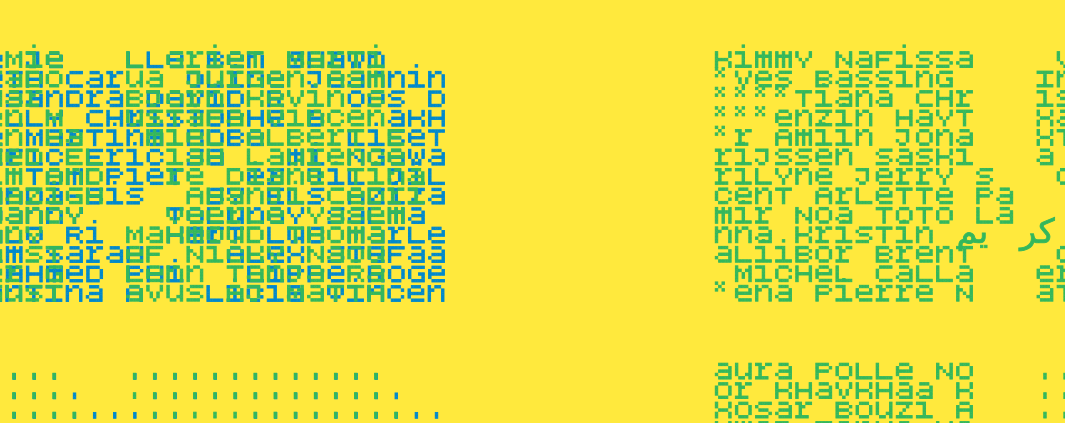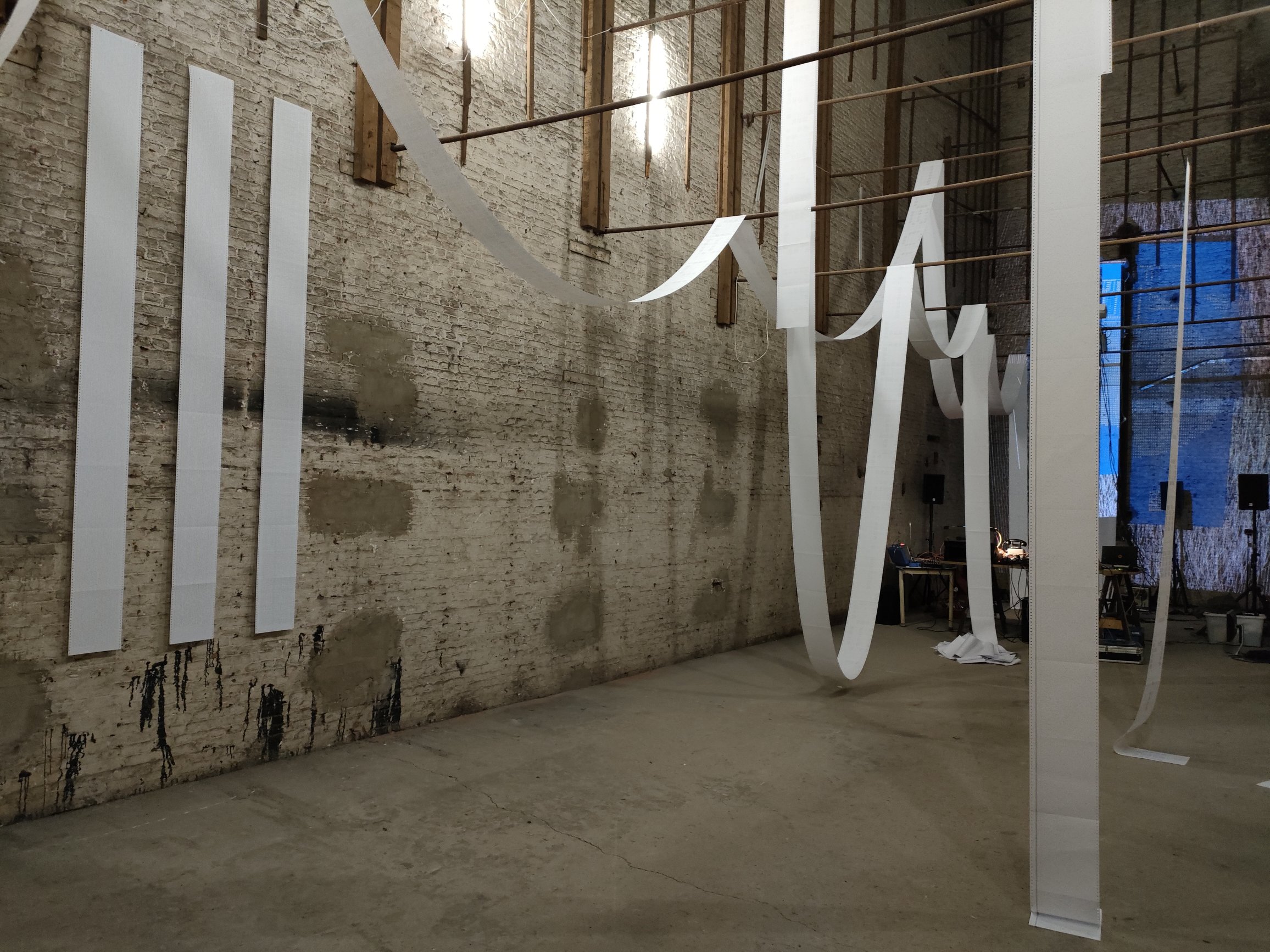FAAR, Antwerp (Deurne) oktober 21st

Lucia Mrakovcic curated this expo in Faar and convinced me to fill this wondourfull space called "the cathedral" with paper, images and sounds.

The verticality was challenging in many ways, but an even bigger problem/opportunity were the specific acoustics. Connecting datasources and noise sources to my mixer would most certainly give interesting results - if I could tame the reverb.
Time to start sketching, this is one of the first ideas that came to me, I ended up patching many more things...

The expo starts with the intersection of the silkscreened expo poster (Riso-print)

As you zoom in on the data you will see that the pixels making up the letters from DATA INTERSECT STUDY themselves are made up of letters...
 These letters are the first names of people with a certain public relationshipstatus from Antwerp, filtered from that found data...
These letters are the first names of people with a certain public relationshipstatus from Antwerp, filtered from that found data...

This simple data filtering technique is enough to indicate what pottentially could go wrong when using this data to do harm. Without focussing on facebook specifically, (I have other data sources > see DATA) data intersect study looks to data structures and tries to create something from the structures.

Trying to grasp the scale at which data is being processed by computers, If you just print out a small percentage of this data, it turns into a huge pile of paper...

Taking a step back the papers have macro message. Here we see:
1. "No, I have no Facebook! (a sentence I have to say too much in my life)
2. "It's complicated!" (composed of all names from people from Antwerp in this relationshipstatus)
3. opposed to "data communism" (here seen from the rear)

A closer look reveals the details this printer produces

The printer was active during the expo, and printed from 6 meters above ground level dropping down paper and spitting out data
Full show with binaulral audio render below.
If you try to make data from a signal, noise is a parameter you have to take into account. Often ignored are the aesthetic qualities of noise.
Tweet